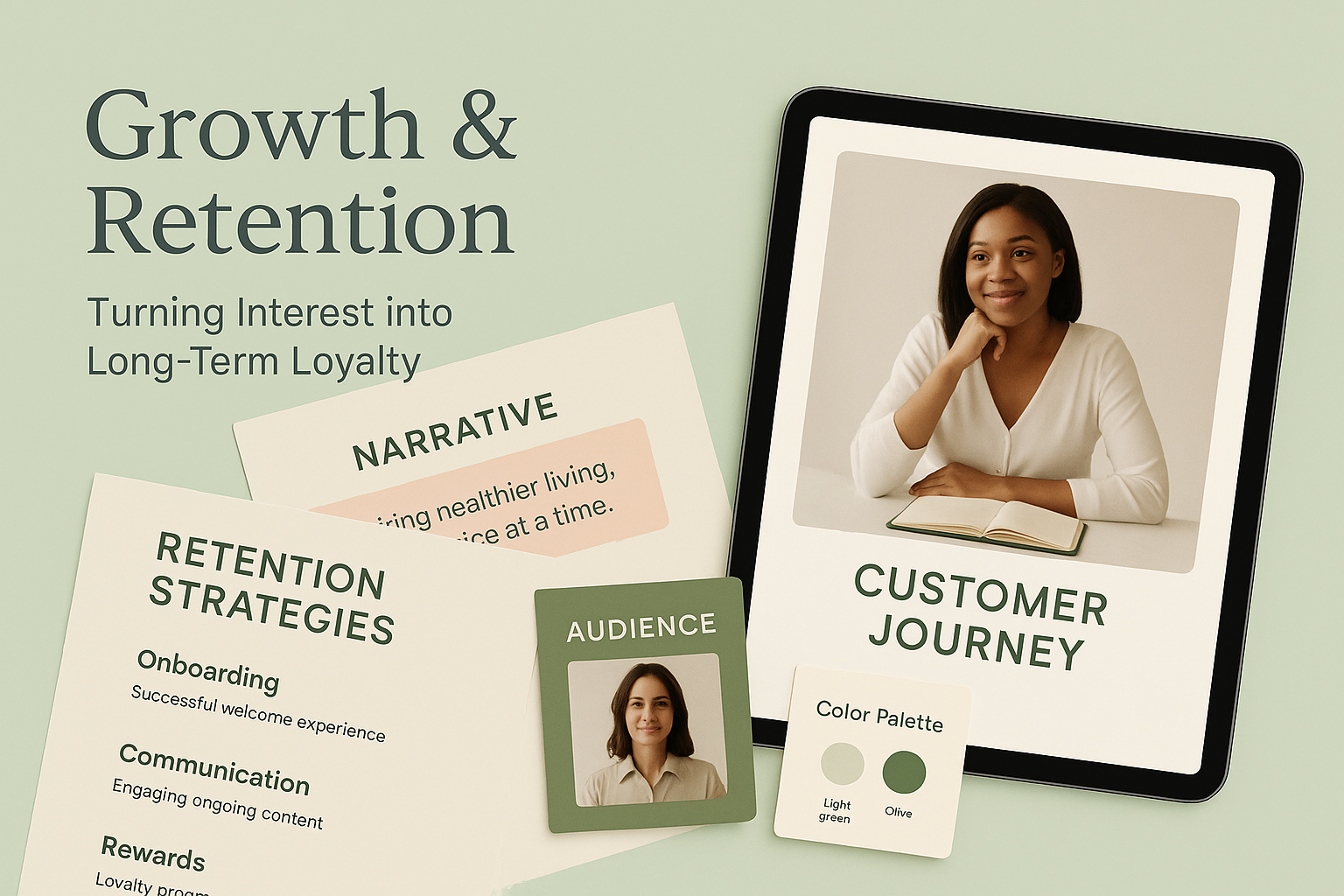Growth & Retention
Turning Interest into Long-Term Loyalty

Content Highlights
Overview The Retention Challenge Segmentation & Customer Lifecycle Planning Engagement-Driven Execution Growth Metrics & Optimization Lessons Learned & Strategic Impact Frequently Asked QuestionsOverview
Customer acquisition might win attention, but it’s retention that drives sustainable growth. This case study showcases how Brandube transformed a high-churn eCommerce business into a loyalty-driven growth engine by implementing advanced retention strategies. Through data-backed segmentation, lifecycle automation, and personalized brand experiences, we helped the client move beyond transactions to create lasting customer relationships that compound value over time.
From first click to repeat purchase, every interaction was designed to reduce drop-off and increase lifetime value through trust, timing, and relevance.
The Retention Challenge
While the client’s acquisition strategy delivered strong first-time conversions, retention was suffering. Repeat purchases were inconsistent, churn rates were high, and customers rarely engaged post-sale. The brand had no clear lifecycle strategy, and communication stopped after checkout.
- Inconsistent post-purchase communication
- No segmentation based on behavior or engagement
- Lack of onboarding or product education flow
- Under-leveraged customer feedback and loyalty data
The challenge was clear: build a retention system that increases LTV without relying on discounts or generic follow-ups.
Segmentation & Customer Lifecycle Planning
We began by auditing the entire customer journey — identifying key milestones, engagement drop-offs, and overlooked moments of value. From there, we developed a segmentation system based on:
- Behavioral Data: browsing patterns, click paths, and recency
- Purchase Intent: average cart size, SKU focus, repeat category interest
- Engagement Signals: email interactions, social touches, reviews
This enabled the creation of hyper-specific lifecycle flows including welcome, education, cross-sell, reactivation, loyalty rewards, and VIP recognition — all dynamically triggered and personalized.
Engagement-Driven Execution
Retention only works if users stay engaged. Our execution layer was built on delivering proactive, helpful, and human interactions across email, SMS, and content hubs. Highlights included:
- Dynamic onboarding sequences tailored to product type
- Automated reorder reminders based on usage cycles
- Customer milestone emails (30 days, 100 days, etc.)
- Product education via social and YouTube content hubs
- Referral loops integrated into post-purchase emails
The brand voice remained consistent, warm, and solution-focused — positioning the brand as a long-term partner, not just a seller.
Growth Metrics & Optimization
Within the first 90 days of implementation, we saw significant uplift in performance metrics across retention and revenue KPIs:
- +38% increase in repeat purchase rate
- +44% boost in customer LTV
- +61% email flow revenue contribution vs. broadcast emails
- 29% reduction in 60-day churn vs. previous quarter
Weekly data reviews led to constant iteration — from subject lines to segment logic — ensuring that no touchpoint was left unoptimized.
Lessons Learned & Strategic Impact
This project proved that long-term growth is driven by thoughtful, scalable customer engagement. Brands often chase new users while ignoring the ones they’ve already earned. By flipping the funnel — and investing in retention — we created a revenue stream that not only outperformed acquisition ROAS but compounded monthly without extra ad spend.
- Loyalty is earned through value, not frequency
- Segmented journeys outperform batch messaging every time
- Retention strategies start at first click — not post-purchase
Retention is no longer optional. It’s the new competitive advantage.
Frequently Asked Questions
- What’s the best tool for lifecycle retention campaigns?
We used Klaviyo for email/SMS due to its powerful segmentation and automation, but platforms like HubSpot or Customer.io can work based on your stack. - How long until I see retention results?
Most brands begin seeing uplift within 30–60 days if flows are triggered based on real behavior and aligned to customer expectations. - Do retention flows reduce the need for ads?
Yes — over time, they help lower CPA and increase revenue per user, making your acquisition more efficient overall. - How often should retention content be updated?
Quarterly audits are ideal. Keep flows fresh, seasonal, and aligned with product trends or customer milestones. - Can retention strategies scale?
Absolutely. In fact, automation is the key to scaling retention while keeping it personal and effective.

